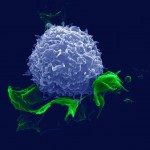Link to Pubmed [PMID] – 19736407
Indian J Med Microbiol 2009 Oct-Dec;27(4):354-7
Serological and molecular characterization of Leptospiral isolates helps us to identify serovar, which is useful, for epidemiological study. Serological characterization is tedious and requires a panel of monoclonal antibodies and expertise to read the results. This study is a preliminary work to evaluate the usefulness of Denaturing Gradient Gel Electrophoresis (DGGE) to identify serovars of leptospira. The V3 region of most conserved 16S rDNA of five pathogenic leptospiral serovars and one saprophytic serovar was characterized. DGGE method was employed to separate the amplified V3 region based on the nucleotide sequence. On DGGE, amplified V3 region of leptospiral serovars, under study, showed bands at different positions indicating DGGE as the effective method of characterization in the future. DNA sequencing of V3 region of the three serovars showed great difference in nucleotide sequence supporting the results of DGGE.

